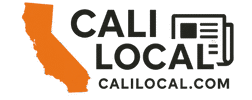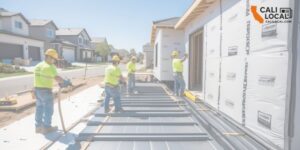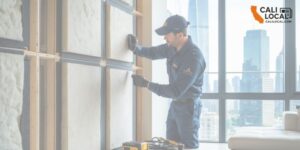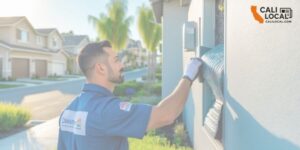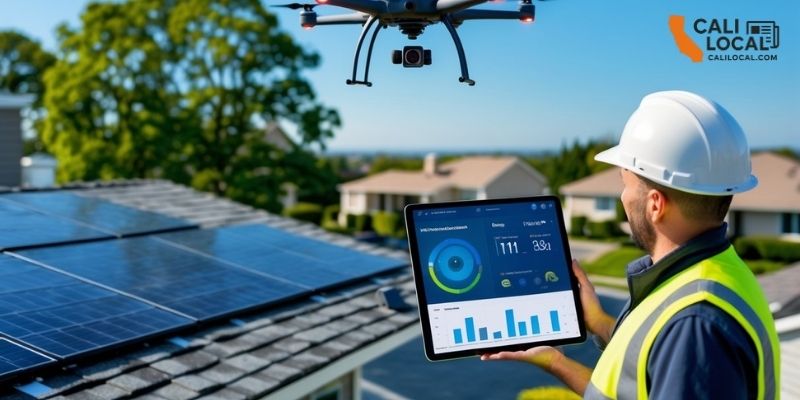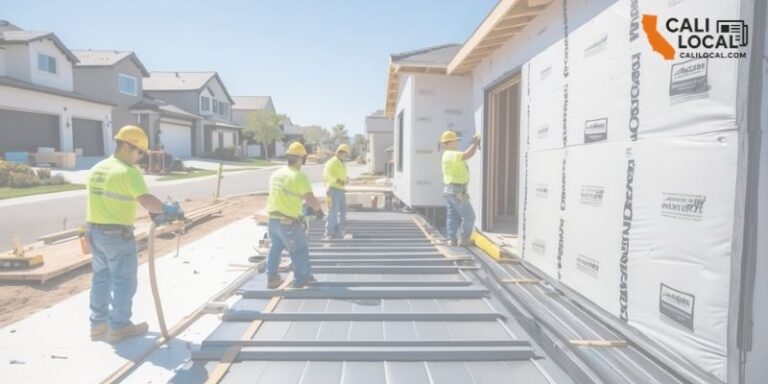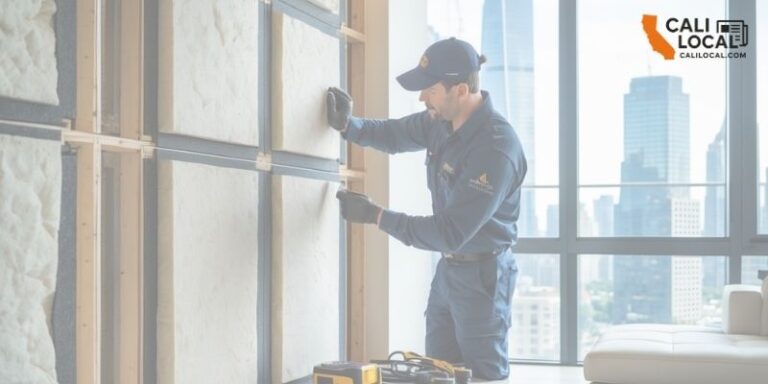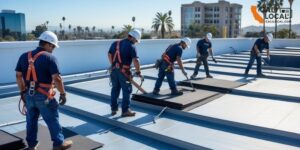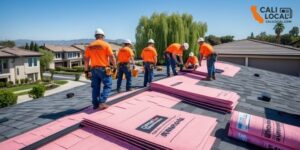Smart Price Roofing has launched a new drone inspection program designed to speed up the process of roof estimates. Using drones, the company can quickly capture detailed images of roofs without the need for manual climbing, making inspections safer and more efficient.
This program allows Smart Price Roofing to deliver faster, more accurate estimates by combining drone technology with advanced software. The drones fly over the roof to gather data, which helps identify any damage or areas that need attention.
The new service reduces the time it takes to inspect a roof, often completing the process in just minutes. This innovation aims to improve customer experience by minimizing wait times and providing clear, reliable information for roofing work.
Smart Price Roofing’s Drone Inspection Program Overview

Smart Price Roofing uses drones to provide faster and more precise roof inspections. Their program relies on advanced technology to capture detailed roof measurements and images without requiring physical access to the roof. This approach streamlines home inspections and reduces risks compared to traditional methods.
How Drone Roof Inspections Work
The drone inspector pilots a remote-controlled drone equipped with high-resolution cameras over residential roofs. The drone captures multiple images and videos from different angles, allowing a thorough visual inspection without climbing onto the roof.
After the flight, the data is reviewed to identify any damage, leaks, or weak spots. This method is safer and faster because it avoids manual roof inspections that can be time-consuming and risky.
Typical inspection flights take under 30 minutes, and the gathered data allows for accurate roof measurements and condition reports. Home inspectors use this information to provide detailed and reliable estimates.
Key Technologies Used in Drone Roof Inspections
Smart Price Roofing’s drones use autonomous flight capabilities combined with high-definition cameras. This technology lets drones follow preprogrammed paths for consistent and complete coverage of the roof’s surface.
Additional tools include infrared sensors for detecting heat loss or moisture beneath roofing materials. Some drones create 3D models or orthomosaic maps, which give detailed views of roof dimensions and structure.
These features result in more thorough inspections than simple visual checks. The technology ensures that minor issues can be detected early, improving the accuracy of roof evaluations.
Advantages Over Manual Roof Inspections
Compared to manual roof inspections, drone roof inspections offer several benefits:
- Safety: No need for an inspector to climb ladders or walk on potentially unstable roofs, reducing injury risks.
- Speed: Drone inspections can finish a job in a fraction of the time traditional inspections require.
- Detail: Drones capture high-quality images and measurements from angles difficult to reach manually.
- Cost-Effective: Faster inspections reduce labor time, often lowering overall costs.
These advantages make drone technology an efficient choice for home inspectors and roofing companies focused on delivering precise and timely roofing reports.
Benefits and Innovations of Smart Price Roofing’s Drone-Based Estimates

Smart Price Roofing uses advanced drone technology to improve roof inspections and estimates. Their approach focuses on faster data collection, detailed roof analysis, and lowering costs for homeowners. High-resolution cameras and software tools help create precise reports that support better roof maintenance decisions.
Speed and Accuracy of Roof Assessments
Smart Price Roofing utilizes drones like the DJI Mavic 3 and Yuneec Typhoon H to quickly capture detailed images of roofs. These drones fly safely over properties using obstacle avoidance technology, collecting data in minutes instead of hours.
The drone roof inspection process produces high-quality photos and videos that show issues like missing shingles or roof defects clearly. This allows for faster, more accurate estimates than traditional walking inspections, reducing human error and enhancing safety.
Using software like DroneDeploy and Pix4D, the data is turned into organized roof reports. These reports support clear communication with clients and improve the accuracy of cost estimates.
3D Mapping and Thermal Imaging Applications
Smart Price Roofing’s drones capture 3D models through 3D mapping tools to give a complete view of the roof’s condition. This helps identify uneven surfaces and hidden damage that may not be visible from basic photos.
Thermal imaging adds another layer by detecting heat patterns, highlighting moisture and insulation issues before they worsen. Using this technology prevents expensive repairs and supports better roof maintenance planning.
Combining 3D mapping with thermal data results in thorough, realistic visuals that help homeowners and contractors understand the roof’s status clearly.
Cost Savings for Homeowners
Drone-assisted inspections reduce labor and inspection time, which lowers the overall drone roof inspection cost. Fast flight time and automated data processing cut down manual labor hours.
Homeowners save not only on inspection fees but also avoid costly repairs by catching issues early. With precise reports, Smart Price Roofing provides fair pricing and reduces unexpected expenses.
Using drones also minimizes the risk of accidents during high or hard-to-reach roof inspections, which can add insurance costs. This technology supports affordable, safe roofing services that benefit homeowners directly.
- Smart Price Roofing
- 400 Edmondson Alley, Pasadena, CA 91105
- +16264144978
- https://smartpriceroofingpasadenaca.com/
Frequently Asked Questions
Drone technology provides detailed images and data from multiple angles, helping to identify roof issues more precisely. It speeds up the process and reduces the chance of human error.
How does drone technology improve the accuracy of roofing estimates?
Drones capture high-resolution photos and videos from all roof angles. This allows estimators to see damage clearly without climbing on the roof, reducing missed issues.
They can create 3D models to measure roof size and shape accurately. This helps in calculating materials and costs more exactly.
What are the benefits of using thermal imaging in drone roof inspections?
Thermal imaging detects temperature differences on the roof surface. It can spot leaks, moisture, and insulation problems that aren’t visible to the naked eye.
This technology helps target repairs more efficiently and prevents hidden damage from worsening.
Is specialized software required for analyzing drone-captured images of hail damage on roofs?
Yes, specialized software processes the images to identify hail dents and damage patterns automatically. This speeds up the damage assessment.
It also helps produce detailed reports for repair planning or insurance claims.
Can drone inspections for roofing be utilized for insurance assessments?
Drone inspections provide clear, detailed documentation of roof damage. This supports accurate insurance claims and faster processing.
Insurance adjusters can review the drone data remotely, reducing the need for onsite visits.
What qualifications are needed to perform drone-based roof inspections?
Operators need a remote pilot license from the appropriate aviation authority. They must follow safety and privacy regulations.
Experience in roofing or construction helps in recognizing roof issues during the inspection.
How does using drones for roof inspections compare in cost to traditional methods?
Drone inspections typically cost between $100 and $750, depending on roof size and complexity. This is often cheaper than manual inspections.
They save time and reduce safety risks, adding value beyond just the price difference.
